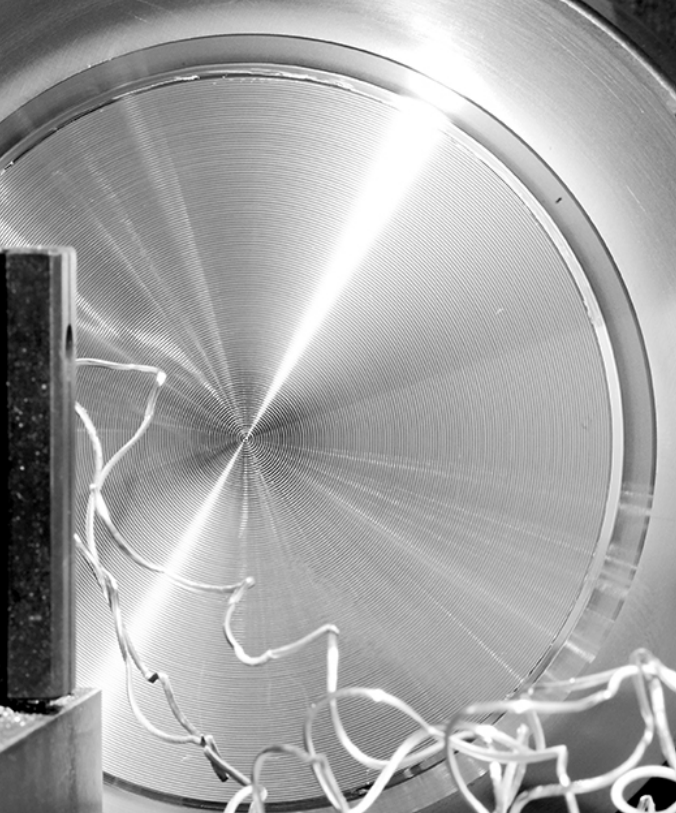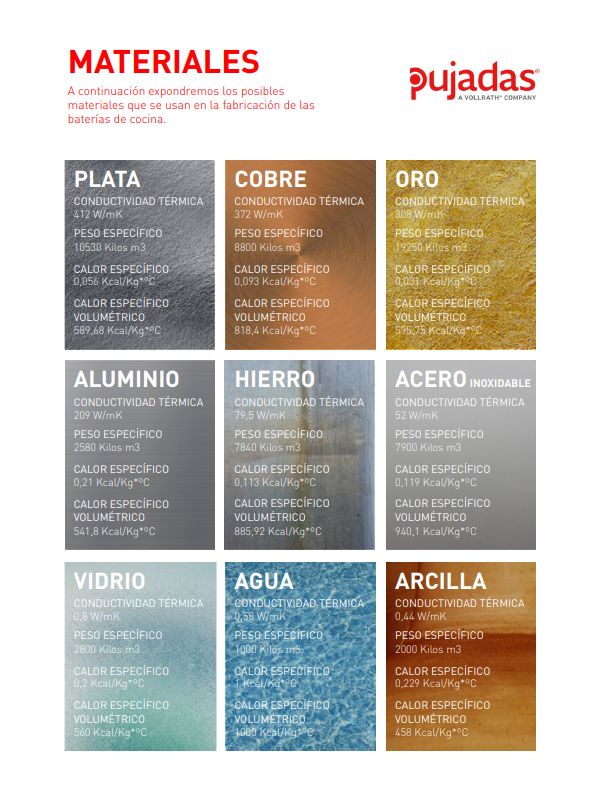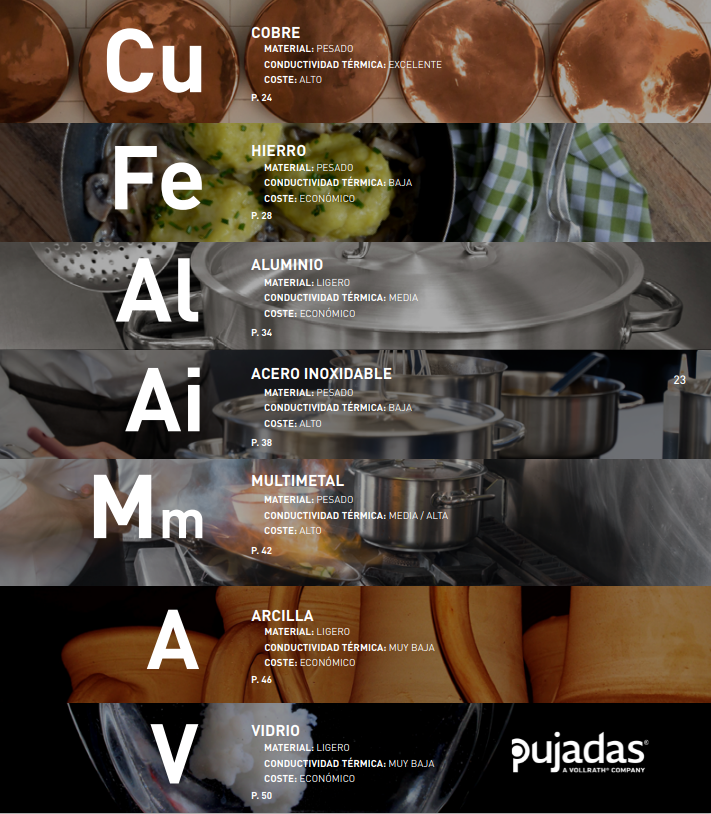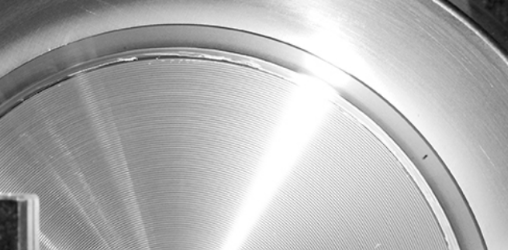Materials in cookware and kitchen utensils
The most suitable materials in cookware and kitchen utensils are always those are impermeableand undoubtedly, good conductors of heat, but which do not contaminate food.
These two characteristics are not found together in any type of material used for the construction of cookware .. And to complicate matters further, we should also add an additional condition: we demand that they also have a good mechanical resistance introduction to the materials introduction to impact
(that they don’t breakor become misshapen easily): For example, when an oven tray is no longer flat, it creates a non-uniform thicknesses in the liquid, producing uneven cooking. Or, for example, the deformed base of a pot reduces the surface area in contact with the hob, making heat transmission extremely inefficient.

TAKING THESE FACTORS INTO ACCOUNT, WE CAN LOOK AT THE MATERIALS IN COOKWARE AND KITCHEN UTENSILS AND SEE HOW THESE PROBLEMS ARE RESOLVED IN PRACTICE.
three main categories of materials in cookware and kitchen utensils:
– METALS AND ALLOYS
– NON-METALLIC MINERAL MATERIALS
– POLYMERIC MATERIALS
The most commonly used metals and alloys for the manufacture of kitchen utensils have been copper, iron, aluminium and stainless steel. Some of these have practically disappeared from use and others have become more widespread.
The non-metallic solid materials are characterised by a low thermal con ductivity, the most common are plastic, ceramic and glass materials, where the different structures provide a variety of mechanical properties, ranging from the fragility of the glass and ceramics up to the extreme resistance of silicone

MATERIALS
MATERIALS in cookware and kitchen utensils
In the world of cookware, we can find a wide range of materials. Each of these materials is the result of a specific culinary need and has a series of advantages and limitations.
When using them, we must consider what material will give us the desired result. In addition to its use, other aspects to be taken into account include maintenance, the optimal size, thermal conductivity and price.
What is it…? *Thermal conductivity
Thermal conductivity is the ability of a material to transmit heat by direct contact.
direct. The higher the value, the faster the temperature is transferred
throughout the body of the material
What is it…? *Specific heat capacity
Specific heat capacity is the amount of energy a material needs to increase its temperature by 1°C. Using this, we can say that the higher the value, the more energy (kCal) we will have to apply in order to increase the temperature.
Below we will discuss the materials in cookware and kitchen utensils








Leave a reply